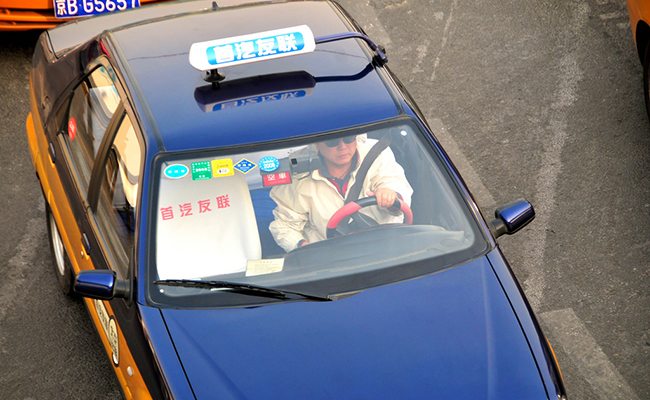In an earlier article I discussed how the regulation of Beijing’s taxi fares had taken taxis off the road. Recently there has been a spate of mobile applications (mobile apps) to address this problem: DiDiDaChe and YaoYaoZhaoChe in Beijing, KuaiDiDaChe in Hangzhou, and DiDi and KuaiDi in Shanghai and Guangzhou. Although varying slightly, these apps generally work as follows: when you want a taxi, you click on the app’s icon. As it loads, the app uses your phone’s GPS system to determine your location. It uses this as your origin unless you override it or input more detailed location information. You then enter your desired destination.
The next step is where it gets interesting. You have the choice to enter a bid. If you choose not to, then you pay the metered rate; if you do, then you pay the driver more. For example, if you enter RMB 10, then you promise to pay the driver the metered rate plus an extra RMB 10. You then submit your request. Cab drivers using the same app (most cities have more than one competitor) can use their phone to view incoming requests. If they wish, they can accept your request and proceed to your location. At the end of the ride, you pay the driver any extra amount that you bid.
These applications serve a useful role because they allow you to request a cab even if none is nearby. This more efficiently matches empty cabs with passengers who cannot find a cab. But what is the effect of this bidding? Let’s walk through this to see. If you have ever tried to hail a cab in Beijing when it is raining, then you have experienced what economists call a supply-demand imbalance. Legally, taxi drivers are only allowed to charge passengers the metered rate. When it suddenly rains, the demand for cabs jumps up–people who would normally walk or wait for a bus now want to take a taxi instead–but the supply of cabs on the road stays the same. Demand exceeds supply. If it were legal, cab drivers would immediately raise their prices convincing some of those wanting cabs to walk home or take the bus after all. Prices would rise until demand equals supply.
Now notice what will happen with these new apps. If it starts raining, those willing to pay more for a cab will bid raising the price of a cab ride. Taxi drivers will accept the highest bids and ignore all the rest. Bids will get high enough that the effective price (the metered rate plus the bid) will clear the market. Demand will equal supply. This also increases efficiency. Those who value a cab ride the most are able to get one while everyone else does not. At the same time, drivers’ incomes increase. This is good since as I argued in my first article drivers have suffered from low regulated rates.
Now imagine it is the middle of a work day and the Beijing sky is clear (at least of rain, if not pollution). In this case, there are more than enough cabs available. There are cab drivers who would like to pick up a fare but idle their cars because no passengers are available. Supply exceeds demand. Some taxi drivers would like to lower their prices but are legally obligated to charge the metered rate. How do the apps handle this situation? It turns out that you can bid a negative amount. For example, if you bid RMB -5 and a driver accepts it then at the end of your ride the taxi driver charges you RMB 5 less than the metered rate. This lower effective price draws more riders into the market (those who would have walked or taken the bus instead) increasing demand until it equals supply. This also increases efficiency. Taxi capacity that would otherwise be wasted is now utilized raising drivers’ incomes and allowing more passengers to get taxi rides.
Whether these new apps are legal remains an open question. They clearly circumvent the government’s regulated rates. If not legal, I hope the government changes the rules. The price flexibility these apps provide more closely aligns supply and demand. This keeps cabs more highly utilized and provides more rides for passengers. At the same time it raises drivers’ incomes.
These new apps do favor the wealthy. First of all, the wealthy are more likely to have a smartphone to use the apps. This is not a big issue as long as a significant number of drivers also lack smartphones to use the apps. The bigger issue is that the apps will raise the average price of cab rides (cab shortages are more common in Beijing than surpluses). Of course, the poor get priced out of many markets and the government can play a meaningful role in helping them. But interfering with the price of taxis is an inefficient way to help. Keeping the price of cabs artificially low doesn’t increase the availability of cabs. Quite the opposite–it deters drivers from operating. A more direct way for the government to help would be to increase the number of licenses available for taxis in Beijing. These apps will then help keep these extra cabs highly utilized and reduce the growth of private automobiles making parking easier.
(Image courtesy: Flickr user Boris van Hoytema’s photostream)




















